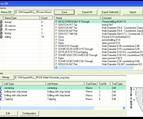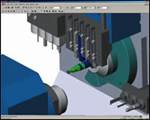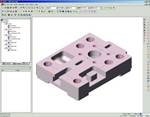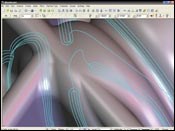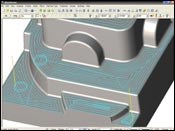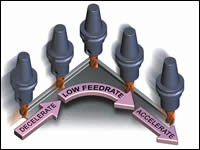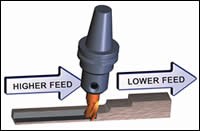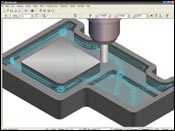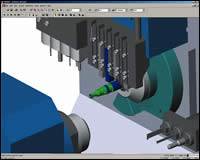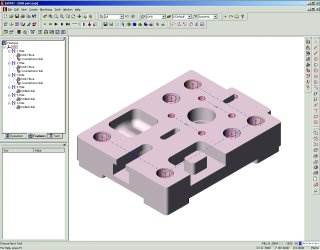Rediscovering CAM
Exploring underused CAM features that can improve moldmaking productivity and trim operating costs.
Moldmaking shops have it rough. They face continual market pressure to shorten delivery leadtimes and reduce labor and material costs, while maintaining or improving their already high quality standards.
CAM software developers also are under a lot of pressure. They serve three masters: (1) customers, who are of course, the top priority; (2) CNC machinery builders; and, (3) tooling manufacturers who routinely ask for expansions and improvement to current offerings.
So there is a lot is happening in the world of CAM technology. Some of these rapidly emerging developments could have the potential to dramatically impact a moldmaking shop’s profitability. They fall in two general categories: (1) new CAM features that reduce CNC programming labor and (2) new developments that improve CNC throughput and quality.
Reducing Labor
CAM software has allowed us to program CNC equipment so that the actual cutting of mold components has very little manual labor content. Today that is not good enough. Modern CAM software eliminates the duplication of labor already expended during computer-aided design to further automate much of the CAM programming process itself.
Here are some aspects of CAM software that can give moldmakers an extra competitive edge.
New Versions
New versions of CAM software can bring additional functionality and labor reductions, but they also require additional learning time. This is the situation that Tom Prebelich, tooling supervisor for Dynamic Plastics (Chesterfield Township, MI), faced last year when he received the latest version of his vendor’s CAM package. Compared to the version his 12 toolmakers were using, it was radically different in terms of a streamlined interface and numerous toolpaths for surfaces and high-speed machining.
The software’s potential for productivity improvement could not be ignored. He thought it should be implemented as soon as possible. On the other hand, he needed to avoid major interruptions in workflow that a rapid wholesale changeover can cause. So, he came up with a “dipping your feet in the water” strategy. The toolmakers were asked to use the new version to work on something for an hour a day during the first week, two hours in the second week, and so forth.
By the end of the first week, half of the toolmakers were doing all of their CAM work in the new version. By the end of the second week, they all were using it. By the end of the year, the company had improved CAM programming productivity by 15 to 20 percent, according to Prebelich—avoiding costs equal to hiring two additional toolmakers.
Open Architecture
Some of the best CAM software today relies on an open architecture. In plain terms, this means that the engine or working part of the program readily imports and performs its operations using files generated by many different types of CAD software. Openness is a really helpful attribute if the jobs sent to you come in a variety of CAD files: CATIA, Pro/E, Unigraphics, SolidWorks, DFX, IGES, and others.
Of course aerospace, automotive and medical device manufacturers all have their preferred CAD system. Even if you can afford to have seats of several CAD systems, there still may not be enough of the one you need during a tooling program crunch. Then, somewhere in the middle of the project, changes may start coming in from even more diverse sources: reverse engineering files, point cloud data, and other types of CAD sources—wireframe, solids, surfaces, even mixed.
The days when you could afford to edit diverse data sources manually are over. Think of the open architecture of a good CAM system as a Rosetta stone that can translate various file types and bring them into a common CAM programming environment. Understanding and using the open file handling characteristics of your CAM system can shorten turnaround times overall and eliminate major bottlenecks during the most critical phases of your projects.
Associativity
Ever since computers arrived on the manufacturing scene, clock speeds, volatile memory and storage capacity have grown geometrically. What this means in practical terms is that CAM systems have the potential to do a lot more than they could even two years ago. One way some CAM system developers have taken advantage of this raw computing power is to build associativity into their products.
Associativity means that the CAM software understands and keeps track of the settings and options within a CAM file that are interrelated. When one or more aspects of a CAM file are changed, the program automatically scans through all the menus to find every setting that may need to be adjusted.
Suppose a cutting tool vendor comes into your shop one day, and he sees an opportunity for you to shave 30 minutes off a five-hour mold surfacing job using his new tool. You can’t just throw the new cutting tool into your CNC and run it because too many settings are affected. Without associativity, you might let this opportunity pass because it would take too much time to find and manually adjust these settings. With associativity, you can identify and then automatically change all of the related settings and be up and running in minutes. Multiply this across all of the subtle and not-so-subtle changes you could make to optimize your manufacturing processes, and associativity translates into money in the bank.
Change Recognition
This is similar to associativity, but refers to identifying and compensating for changes to CAD files external to the CAM system. Assume an important customer tells you that you have been selected to manufacture a set of family molds for an important new product introduction. The deadline, of course, is impossible, but you have been there before.
You get CAD files of the design, which is nearly ready to go, so you can provide engineering feedback and estimate the job. Because you have a long relationship with this customer, you also begin work generating the toolpaths for these molds so you can hit the deck running when it’s time to go.
A few weeks later, the customer delivers the final CAD models, and true to his word, there have been only minimal changes. But what are these changes and how do they relate to the CAM programming you have already done? There is one other slight problem. A couple sets of inserts were minimally redesigned in two CAD programs unrelated to the files you were originally given. Your customer outsourced this work at the last minute.
Your customer doesn’t know you have already invested considerable CAM programming on his project. It’s not his problem. Even with marked up drawings, it could take a dozen or more hours to manually identify all the changes and regenerate corrected CAM files. This could put you several days or a week behind schedule, unless your CAM system has change recognition.
This amazing feature reads through the new CAD files, comparing them to your current CAM implementations. A good change recognition package will identify modifications to any type of CAD geometry with no file type limitations. (This can include any combination of wireframe, solids or surfaces.)
Some software packages will even mark any toolpaths affected by the updated CAD file. By doing this, the user can quickly select the new geometry and update the toolpaths with little effort. Once you update an affected toolpath, you can automatically update any additional toolpaths that use that geometry.
The real power change recognition provides is most evident when a shop receives engineering changes to a large file with multiple operations. Something as simple as a few additional drill holes in a mold cavity can be very hard to identify. Now, with a few simple mouse clicks, the user can immediately locate and program these changes, saving valuable time—over and over again.
Change recognition can be set up so it is always operating in the background. When you open the CAM file for a given part file, it will go to a specified folder to see if there are any new CAD files associated with this part, and if there are, perform its magic.
Improving CNC Throughput and Quality
Not all CAM-generated machining strategies are alike. Choose the right ones and you will make better mold components faster while reducing cutting tool costs. Here are a few examples.
High-Speed Machining
An obviously major improvement in CAM packages has been the introduction of a wide range of toolpaths that support high-speed machining strategies. High-speed machining is a real benefit to moldmaking shops because it replaces many costly EDM processes, produces high-finish contact surfaces right off the machine, and allows shops to use pre-hardened steel so that mold components don’t have to be sent out for subsequent hardening.
The high-speed machining strategies embedded in CAM software not only save time and money, but they also allow for the cutting of surface qualities and geometries previously unobtainable. Ultra-thin wall machining is just one example. The library of high-speed toolpaths is building rapidly.
HS Strategies for Conventional CNCs
One of the great undiscovered secrets of CAM approaches to high-speed machining is that this new set of cutting strategies is also very useful with conventional CNC equipment. For example, maybe you have some vintage 70s and 80s Bridgeports. The same cutting strategies you use on your high-speed machining center will provide for higher outputs, greater tool life, better surface finish, and less wear on your older CNC machine. Who says you can’t teach old dogs new tricks?
High-speed toolpaths have a very fluid motion both for roughing and finishing. Among the latest developments are adaptive toolpaths, which intelligently match their cutting action to the topology of the surface. A new peel strategy for roughing allows the tool to take a full depth cut from the side, to peel away material in small increments, but at high production rates. These are just a few examples.
If recent CAM packages contain undiscovered ore for improving moldmaking shop profitability, high-speed machining strategies could be the mother load. It will be well worth you while to discover what is there and use them for all their worth wherever they can be applied.
Feedrate Optimization
What if you could run almost all of your CNC machines, not just your high-speed equipment, 10, 20, even 30 percent or more without tool life or equipment longevity decreasing, and improve the surface finish of your molds. Feedrate optimization, a surprisingly underused CAM strategy, allows you to do just that.
Feedrate optimization is a programming tool within many CAM packages that enables the programmer to build feedrate adjustments into the CNC program in the off-line mode. It operates by analyzing the CNC toolpath and divides the motion into smaller segments. Based on the volume of material removed in each segment, the software calculates the optimum feedrate for the cutting condition. It then provides a new toolpath that is identical to the original, except with new feedrates.
Feedrates are increased to maintain consistent load, but decreased to negotiate direction changes without over- or under-shooting the geometry, given the responsiveness of the servos on the target machine. Likewise, rapid moves are applied to passes where the tool is not in contact with the workpiece to reduce the time spent “cutting air.” The results are machining routines that can significantly shorten cycle time without unduly burdening the programming effort.
Not only will you get parts off the machine faster, but the parts will be more accurate and have an improved, more consistent finish. This is thanks to accurate toolpaths carried out at the optimum rate for that particular move, condition or function. For moldmakers, the potential improvement in part quality alone may warrant applying the feedrate optimization feature in their software because these shops are accustomed to spending significant time hand-polishing molds.
Feedrate optimization can be used across the board within safe limits based on the particular machine’s operating characteristics. Individual machines can also be further accelerated within safe limits after benchmarking them by performing a simple test that requires the machine to be out of production for several hours.
Taking Absolute Control
There is such a thing as over-automation, and this could be true of some implementations of the CAM approaches outlined here. Over-automation occurs when a canned operation automatically makes all of the decisions about what’s going to happen next without giving the moldmaker a choice in the matter. Using that type of routine is sometimes called being “pushbutton stupid.”
Moldmakers require and have the right to absolute control over every point in the cutting tool motion, especially in matters affecting surface finish. Most of the time, it is best and easiest to go along with what your CAM software has suggested. However, there are times when the user has to call the shots, and this situation most frequently occurs when critical mold performance characteristics are at stake. If an automated CAM feature routine requires you to forgo absolute control of the cutting tool, think hard before you do it. It could be a very bad bargain.
Summary
The CAM technology many shops have already paid for is capable of yielding dramatic improvements in programming productivity, machining output and shop profitability. This article is not suggesting that you necessarily buy anything new to gain a competitive advantage for your shop, but only to discover what your CAM package already has and use it to the fullest extent.
If you find this material too daunting, just do one thing—implement change recognition or feedrate optimization in your shop. You will be so pleased with the results that you will be ready to address some of the other opportunities presented here very soon.
![]()
Related Content
Mold Design Review: The Complete Checklist
Gerardo (Jerry) Miranda III, former global tooling manager for Oakley sunglasses, reshares his complete mold design checklist, an essential part of the product time and cost-to-market process.
Read MoreHow to Analyze and Optimize Cutting Conditions to Reduce Cycle Time
Plastic injection mold design and manufacturing company puts NC program optimization software module to the test. The results were surprising.
Read MoreTolerancing in Mold Design, Part 1: Understanding the Issues of Conventional Bilateral Tolerancing
Mold designers must understand the location, orientation and form limitations of conventional tolerancing before changing to another dimensioning system.
Read MoreTolerancing in Mold Design, Part 2: Using GD&T to Address Conventional Tolerancing Issues
Mold designers can achieve a single interpretation of workpiece functionality when following the American Society of Mechanical Engineers Geometric Dimensioning and Tolerancing standard.
Read MoreRead Next
The Feature Technology Feature of CAD/CAM
CAM software should have forward looking features that allow you to work in a traditional programming approach and to step up into a more organized environment that includes storing process knowledge and corporate experiences.
Read MoreCAM Technology Trends
More than the products themselves, the CAM industry is changing the way it does business and moldmakers should take note.
Read MoreChoosing the Right Knowledge-Based CAD/CAM System
CAD/CAM systems that offer knowledge-based machining deliver tremendous savings in both time and costs, but only when the system meets your specific needs.
Read More
